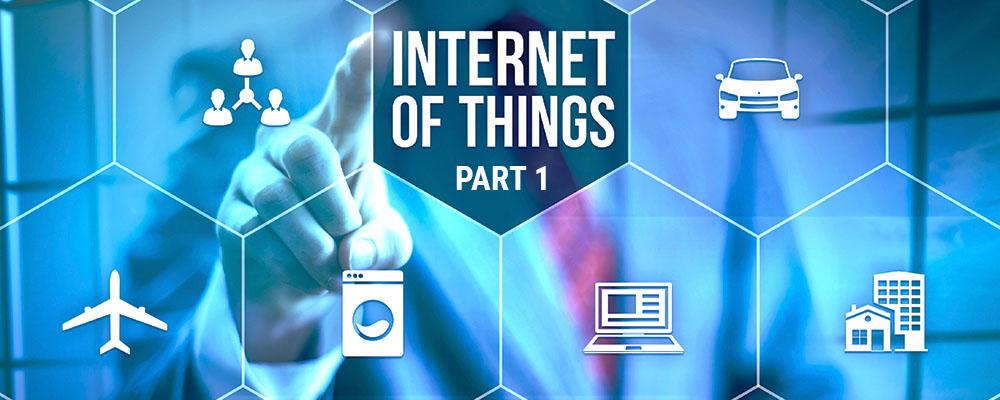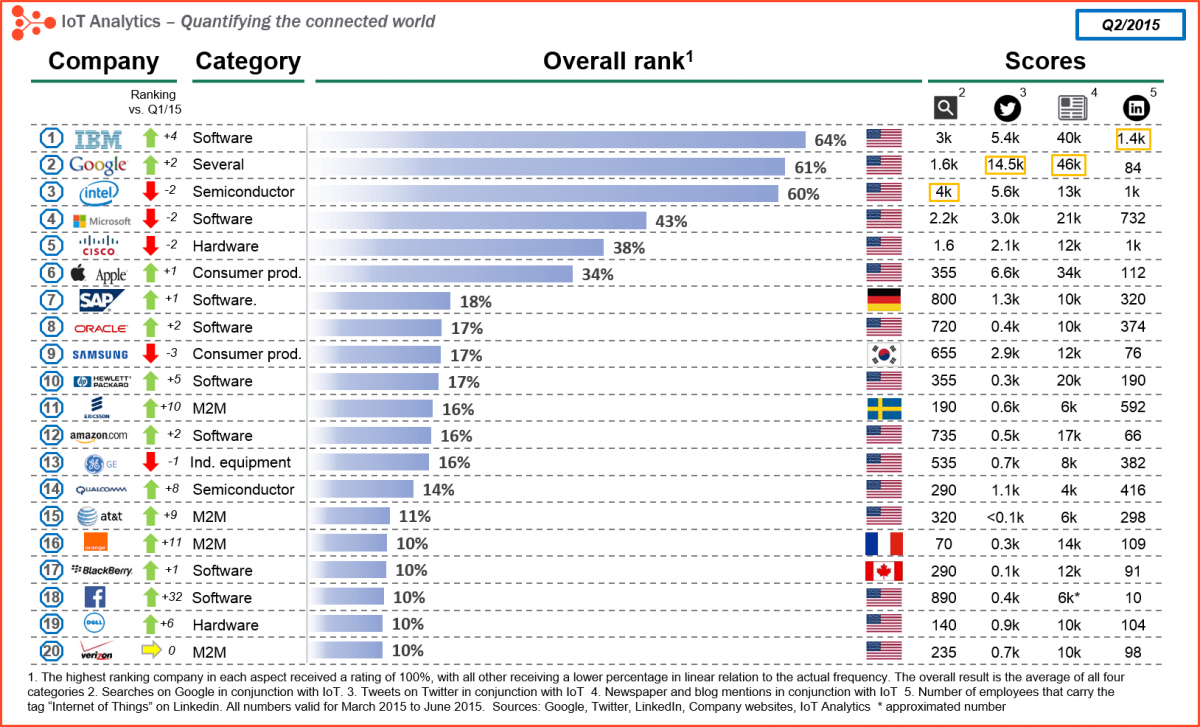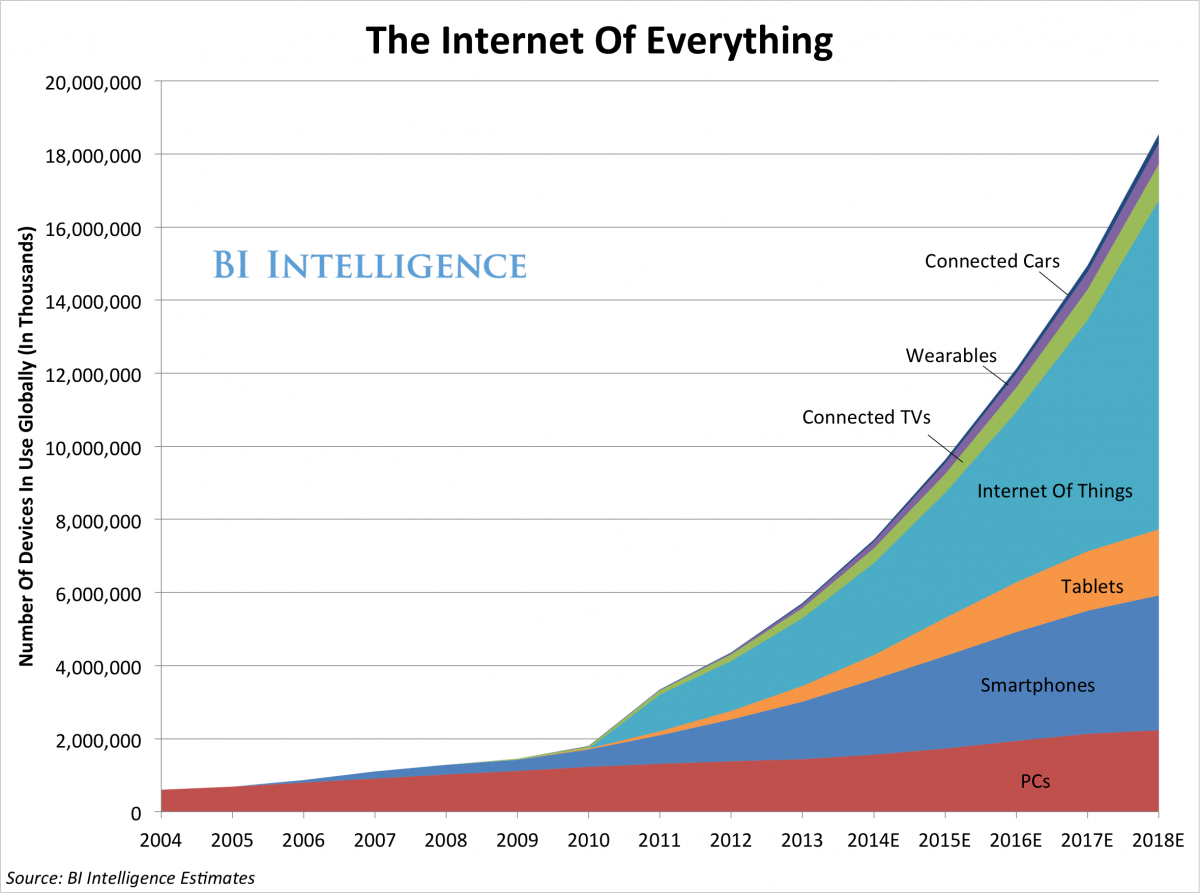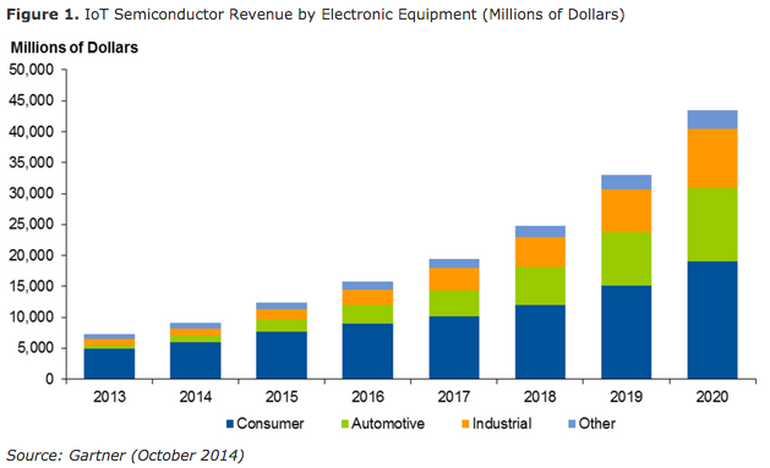
Qt and the Internet of Things - Part 1
Gartner, Inc. forecast last year that 4.9 billion connected devices would be in use in 2015, up 30 percent from 2014, and the number will reach 25 billion by 2020. They describe the Internet of Things (IoT) as "a powerful force for business transformation, and its disruptive impact will be felt across all industries and all areas of society."
What exactly is IoT? As a software developer, does it really represent something new? In this blog post, the first of a series, I will present an overview of IoT, covering what IoT is and is not and define some terms. I will also list some example IoT products, discuss the projected market growth and opportunities and try to answer the question of what IoT means to software developers.
This post is based on a presentation (1) I gave at the Qt World Summit 2015 entitled The Internet of Things: What Is It and Why Should I Care?
What is IoT?
Wikipedia (2) has this definition of the Internet of Things:
"The Internet of Things (IoT, sometimes Internet of Everything) is the network of physical objects or "things" embedded with electronics, software, sensors and connectivity to enable objects to exchange data with the manufacturer, operator and/or other connected devices based on the infrastructure of International Telecommunication Union's Global Standards Initiative.
The Internet of Things allows objects to be sensed and controlled remotely across existing network infrastructure, creating opportunities for more direct integration between the physical world and computer-based systems and resulting in improved efficiency, accuracy and economic benefit.
Each thing is uniquely identifiable through its embedded computing system but is able to interoperate within the existing Internet infrastructure. Experts estimate that the IoT will consist of almost 50 billion objects by 2020."
Cisco, one of the larger players in IoT, uses this definition that offers a marketing-centric view:
"Cisco defines the Internet of Everything (IoE) as bringing together people, process, data and things to make networked connections more relevant and valuable than ever before - turning information into actions that create new capabilities, richer experiences and unprecedented economic opportunity for businesses, individuals and countries."
If you are a technical person, you can think of it this way: decreasing hardware and bandwidth costs mean that the cost to connect devices to the Internet is approaching zero. It is feasible for almost anything to have a processor and be connected to the Internet.
The term Internet of Things was coined by British entrepreneur Kevin Ashton in 1999. The scope of IoT includes:
- Embedded devices which manage and collect data from sensors or other inputs
- Cloud storage of data
- Aggregation and analysis of data
- Applications which present data to users in meaningful ways
The combination of low-cost sensors and computing, affordable broadband Internet and inexpensive cloud storage has created the synergy to enable IoT. A popular catchphrase is "Anything that can be connected, will be connected."

Top 20 IoT Companies (image credit: IoT Analytics)
Several companies like IBM, Intel, Google and Cisco want to get a big piece of (or become the leader in) the storage, aggregation and overall architecture and frameworks for IoT.
Terminology
Let's define a few of the common terms used around IoT:
IoT - Internet of Things.
Internet of Everything - equivalent to IoT (Cisco promotes this term).
Web of Things - a term used to describe approaches, software architectural styles and programming patterns that allow real-world objects to be part of the World Wide Web. An Application Layer that simplifies the creation of IoT applications.
Smart Grid - a modernized electrical grid that uses information and communications technology to gather and act on information in an automated fashion to improve the efficiency, reliability, economics and sustainability of the production and distribution of electricity.
Smart City - the use of digital technologies or information and communication technologies to enhance quality and performance of urban services, to reduce costs and resource consumption and to engage more effectively and actively with its citizens.
Beacon - a class of Bluetooth Low Energy devices that broadcast their identifier to nearby portable electronic devices. The technology enables smartphones, tablets and other devices to perform actions when in close proximity to a beacon. iBeacon is a beacon protocol standardized by Apple.
Wearable (computer) - miniature electronic devices that are worn under, with, or on top of clothing.
Example Products
Here are some examples of products that would be considered IoT. Depending on where you live, some of these may be new and innovative or they may be quite common.
A smart trash can which alerts collectors in real time when it is full and needs to be emptied.
A home thermostat that can be controlled by and report usage to the Internet from a web browser to show power usage data down to a granularity of minutes.
A heart rate sensor that reports heart rate and possibly motion, body temperature, etc. to a smart phone running an application that monitors physical fitness and activity.
A coffee maker that can be turned on or off remotely, possibly reporting the amount of coffee available, need for maintenance, etc.
Connected appliances: a washer or dryer could notify the user when a load is done. An oven could be programmed for cooking via the Internet, possibly from a recipe. A freezer or refrigerator could report if the temperature is out of range. Consumers could track items in the fridge using bar codes or RFID tags to monitor when they are out of a product or food items have expired.
Biochip transponders on farm animals used to identify, track location and monitor health.
Automobiles with built-in sensors to locate the vehicle in case of theft, perform remote start, monitor of status or report accidents, impacts, or speeding.
A parking meter that allows payment and fill up via the Internet.
A vending machine where users can pay for items via a smartphone.
Home lighting and home security systems that remotely control and monitor lighting or report intrusions from a web browser or smart phone app.
A Wi-Fi enabled light bulb than can be controlled from a smart phone or wireless remote control.
An IoT connected toothbrush - such a product actually exists as a crowd-funded Kickstarter project and similar devices are now commercially available.
Projected Growth and Market Opportunities

IoT Growth Estimates (image credit: BI Intelligence)
Gartner predicts the Internet of Things installed base will grow to 26 billion units by 2020. A piece of trivia: the number of mobile devices exceeded the number of human beings on Earth in October of 2014, at 7.2 billion.

IoT Semiconductor Growth Estimates (image credit: Gartner Inc.)
This graph shows some predictions for semiconductor sales, expected to more than triple from today to 2020.
What Does IoT Mean to Software Developers?
Obviously, IoT is good for hardware manufacturers, but for the software industry it is also a huge opportunity for growth. The areas that will need new software systems include those I mentioned earlier: embedded devices, cloud storage, aggregation and data analysis and applications.
This may mean a shift of focus, similar to the shift we have seen in the past from desktop computers to mobile devices and tablets and then to embedded touchscreen devices.
SUMMARY
I hope you found this overview of IoT useful. In a future installment of this series of blog posts, I plan to talk about some of the popular embedded hardware platforms for IoT, key protocols, hardware technologies and software frameworks. I'll also talk about how the Qt framework fits in to IoT and discuss some of the risks, challenges and criticisms.
REFERENCES
- The Internet of Things: What Is It and Why Should I Care?, Qt World Summit 2015 presentation, last accessed 21 Jan 2016, https://youtu.be/9mXlmgWCgcA
- Internet of Things, Wikipedia page, last accessed 21 Jan 2016, https://en.wikipedia.org/wiki/Internet_of_Things